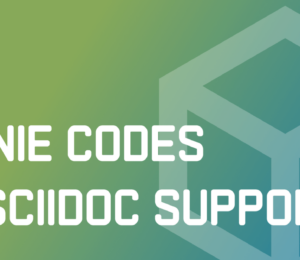Agent Long-term Memory with Spring AI & Redis
- July 23, 2025
- 6119 Unique Views
- 11 min read
- 0. GitHub Repository
- 1. Add the required dependencies
- 2. Define the Memory model
- 3. Configure the Vector Store
- 4. Implement the Memory Service
- 5. Implement Spring AI Advisors
- 5.1 Advisor for Long-term memory retrieval
- 5.2 Advisor for Long-term memory recording
- 6. Plugging the advisors in our ChatClient
- 7. Implement the Chat Service
- 8. Configure the Agent System Prompt
- 9. Create the REST Controller
- Step 1: Clone the repository
- Step 2: Configure your environment
- Step 3: Start the services
- Step 4: Use the application
You're building an AI agent with memory using Spring AI and Redis. Unlike traditional chatbots that forget previous interactions, memory-enabled agents can recall past conversations and facts. It works by storing two types of memory in Redis: short-term (conversation history) and long-term (facts and experiences as vectors), allowing agents to provide personalized, context-aware responses.
LLMs respond to each message in isolation, treating every interaction as if it's the first time they've spoken with a user. They lack the ability to remember previous conversations, preferences, or important facts.
Memory-enabled AI agents, on the other hand, can maintain context across multiple interactions. They remember who you are, what you've told them before, and can use that information to provide more personalized, relevant responses.
In a travel assistant scenario, for example, if a user mentions "I'm allergic to shellfish" in one conversation, and later asks for restaurant recommendations in Boston, a memory-enabled agent would recall the allergy information and filter out inappropriate suggestions, creating a much more helpful and personalized experience.
Video: What is an embedding model?
Behind the scenes, this works thanks to vector similarity search. It turns text into vectors (embeddings) — lists of numbers — stores them in a vector database, and then finds the ones closest to your query when relevant information needs to be recalled.
Video: What is semantic search?
Today, we're gonna build a memory-enabled AI agent that helps users plan travel. It will remember user preferences, past trips, and important details across multiple conversations — even if the user leaves and comes back later.
To do that, we'll build a Spring Boot app from scratch and use Redis as our memory store. It'll handle both short-term memory (conversation history) and long-term memory (facts and preferences as vector embeddings), enabling our agent to provide truly personalized assistance.
Redis as a Memory Store for AI Agents
Video: What is a vector database?
In the last 15 years, Redis became the foundational infrastructure for realtime applications. Today, with Redis Open Source 8, it's committed to becoming the foundational infrastructure for AI applications as well.
Redis Open Source 8 not only turns the community version of Redis into a Vector Database, but also makes it the fastest and most scalable database in the market today. Redis 8 allows you to scale to one billion vectors without penalizing latency.
Learn more: https://redis.io/blog/searching-1-billion-vectors-with-redis-8/
For AI agents, Redis serves as both:
- A short-term memory store using Redis Lists to maintain conversation history
- A long-term memory store using Redis JSON and the Redis Query Engine that enables vector search to store and retrieve facts and experiences
Spring AI and Redis
Spring AI provides a unified API for working with various AI models and vector stores. Combined with Redis, it allows our users to easily build memory-enabled AI agents that can:
- Store and retrieve vector embeddings for semantic search
- Maintain conversation context across sessions
- Extract and deduplicate memories from conversations
- Summarize long conversations to prevent context window overflow
Building the Application
Our application will be built using Spring Boot with Spring AI and Redis. It will implement a travel assistant that remembers user preferences and past trips, providing personalized recommendations based on this memory.
0. GitHub Repository
The full application can be found on GitHub: https://github.com/redis-developer/redis-springboot-resources/tree/main/artificial-intelligence/agent-long-term-memory-with-spring-ai
1. Add the required dependencies
From a Spring Boot application, add the following dependencies to your Maven or Gradle file:
implementation("org.springframework.ai:spring-ai-transformers:1.0.0")
implementation("org.springframework.ai:spring-ai-starter-vector-store-redis")
implementation("org.springframework.ai:spring-ai-starter-model-openai")
implementation("com.redis.om:redis-om-spring:1.0.0-RC3")
2. Define the Memory model
The core of our implementation is the Memory class that represents items stored in long-term memory:
data class Memory(
val id: String? = null,
val content: String,
val memoryType: MemoryType,
val userId: String,
val metadata: String = "{}",
val createdAt: LocalDateTime = LocalDateTime.now()
)
enum class MemoryType {
EPISODIC, // Personal experiences and preferences
SEMANTIC // General knowledge and facts
}
3. Configure the Vector Store
We'll use Spring AI's RedisVectorStore to store and search vector embeddings of memories:
@Configuration
class MemoryVectorStoreConfig {
@Bean
fun memoryVectorStore(
embeddingModel: EmbeddingModel,
jedisPooled: JedisPooled
): RedisVectorStore {
return RedisVectorStore.builder(jedisPooled, embeddingModel)
.indexName("longTermMemoryIdx")
.contentFieldName("content")
.embeddingFieldName("embedding")
.metadataFields(
RedisVectorStore.MetadataField("memoryType", Schema.FieldType.TAG),
RedisVectorStore.MetadataField("metadata", Schema.FieldType.TEXT),
RedisVectorStore.MetadataField("userId", Schema.FieldType.TAG),
RedisVectorStore.MetadataField("createdAt", Schema.FieldType.TEXT)
)
.prefix("memory:")
.initializeSchema(true)
.vectorAlgorithm(RedisVectorStore.Algorithm.HSNW)
.build()
}
}
Let's break this down:
- Index Name:
longTermMemoryIdx- Redis will create an index with this name for searching memories - Content Field:
content- The raw memory content that will be embedded - Embedding Field:
embedding- The field that will store the resulting vector embedding - Metadata Fields:
memoryType: TAG field for filtering by memory type (EPISODIC or SEMANTIC)metadata: TEXT field for storing additional context about the memoryuserId: TAG field for filtering by user IDcreatedAt: TEXT field for storing the creation timestamp
4. Implement the Memory Service
The MemoryService handles storing and retrieving memories from Redis:
@Service
class MemoryService(
private val memoryVectorStore: RedisVectorStore
) {
private val systemUserId = "system"
fun storeMemory(
content: String,
memoryType: MemoryType,
userId: String? = null,
metadata: String = "{}"
): StoredMemory {
// Check if a similar memory already exists to avoid duplicates
if (similarMemoryExists(content, memoryType, userId)) {
return StoredMemory(
Memory(
content = content,
memoryType = memoryType,
userId = userId ?: systemUserId,
metadata = metadata,
createdAt = LocalDateTime.now()
)
)
}
// Create a document for the vector store
val document = Document(
content,
mapOf(
"memoryType" to memoryType.name,
"metadata" to metadata,
"userId" to (userId ?: systemUserId),
"createdAt" to LocalDateTime.now().toString()
)
)
// Store the document in the vector store
memoryVectorStore.add(listOf(document))
return StoredMemory(
Memory(
content = content,
memoryType = memoryType,
userId = userId ?: systemUserId,
metadata = metadata,
createdAt = LocalDateTime.now()
)
)
}
fun retrieveMemories(
query: String,
memoryType: MemoryType? = null,
userId: String? = null,
limit: Int = 5,
distanceThreshold: Float = 0.9f
): List<StoredMemory> {
// Build filter expression
val b = FilterExpressionBuilder()
val filterList = mutableListOf<FilterExpressionBuilder.Op>()
// Add user filter
val effectiveUserId = userId ?: systemUserId
filterList.add(b.or(b.eq("userId", effectiveUserId), b.eq("userId", systemUserId)))
// Add memory type filter if specified
if (memoryType != null) {
filterList.add(b.eq("memoryType", memoryType.name))
}
// Combine filters
val filterExpression = when (filterList.size) {
0 -> null
1 -> filterList[0]
else -> filterList.reduce { acc, expr -> b.and(acc, expr) }
}?.build()
// Execute search
val searchResults = memoryVectorStore.similaritySearch(
SearchRequest.builder()
.query(query)
.topK(limit)
.filterExpression(filterExpression)
.build()
)
// Transform results to StoredMemory objects
return searchResults.mapNotNull { result ->
if (distanceThreshold < (result.score ?: 1.0)) {
val metadata = result.metadata
val memoryObj = Memory(
id = result.id,
content = result.text ?: "",
memoryType = MemoryType.valueOf(metadata["memoryType"] as String? ?: MemoryType.SEMANTIC.name),
metadata = metadata["metadata"] as String? ?: "{}",
userId = metadata["userId"] as String? ?: systemUserId,
createdAt = try {
LocalDateTime.parse(metadata["createdAt"] as String?)
} catch (_: Exception) {
LocalDateTime.now()
}
)
StoredMemory(memoryObj, result.score)
} else {
null
}
}
}
}
Key features of the memory service:
- Stores memories as vector embeddings in Redis
- Retrieves memories using vector similarity search
- Filters memories by user ID and memory type
- Prevents duplicate memories through similarity checking
5. Implement Spring AI Advisors
We’re going to rely on the Spring AI Advisors API. Advisors are a way to intercept, modify, and enhance AI-driven interactions.
We will implement two advisors: one for retrieval and another for recorder. These advisors will be plugged in our ChatClient and intercept every interaction with the LLM.
The retrieval advisor runs before your LLM call. It takes the user’s current message, performs a vector similarity search over Redis, and injects the most relevant memories into the system portion of the prompt so the model can ground its answer.
5.1 Advisor for Long-term memory retrieval
The retrieval advisor runs before LLM calls. It takes the user’s current message, performs a vector similarity search over Redis, and injects the most relevant memories into the system portion of the prompt so the model can ground its answer.
@Component
class LongTermMemoryRetrievalAdvisor(
private val memoryService: MemoryService,
) : CallAdvisor, Ordered {
companion object {
const val USER_ID = "ltm_user_id"
const val TOP_K = "ltm_top_k"
}
override fun getOrder() = Ordered.HIGHEST_PRECEDENCE + 40
override fun getName() = "LongTermMemoryRetrievalAdvisor"
override fun adviseCall(req: ChatClientRequest, chain: CallAdvisorChain): ChatClientResponse {
val userId = (req.context()[USER_ID] as? String) ?: "system"
val k = (req.context()[TOP_K] as? Int) ?: 5
val query = req.prompt().userMessage.text
val memories = memoryService.retrieveRelevantMemories(query, userId = userId)
.take(k)
val memoryBlock = buildString {
appendLine("Use the MEMORY below if relevant. Keep answers factual and concise.")
appendLine("----- MEMORY -----")
memories.forEachIndexed { i, m -> appendLine("${i+1}. ${m.memory.content}") }
appendLine("------------------")
}
val enrichedPrompt = req.prompt().augmentSystemMessage { sys ->
val existing = sys.text
sys.mutate()
.text(
buildString {
appendLine(memoryBlock)
if (existing.isNotBlank()) {
appendLine()
append(existing)
}
}
).build()
}
val enrichedReq = req.mutate()
.prompt(enrichedPrompt)
.build()
return chain.nextCall(enrichedReq)
}
}
5.2 Advisor for Long-term memory recording
The recorder advisor runs after the assistant responds. It looks at the last user message and the assistant’s reply, asks the model to extract atomic, useful facts (episodic or semantic), deduplicates them, and stores them in Redis.
@Component
class LongTermMemoryRecorderAdvisor(
private val memoryService: MemoryService,
private val chatModel: ChatModel
) : CallAdvisor, Ordered {
data class MemoryCandidate(val content: String, val type: MemoryType, val userId: String?)
data class ExtractionResult(val memories: List<MemoryCandidate> = emptyList())
private val extractorConverter = BeanOutputConverter(ExtractionResult::class.java)
override fun getOrder(): Int = Ordered.HIGHEST_PRECEDENCE + 60
override fun getName(): String = "LongTermMemoryRecorderAdvisor"
override fun adviseCall(req: ChatClientRequest, chain: CallAdvisorChain): ChatClientResponse {
// 1) Proceed with the normal call (other advisors may have enriched the prompt)
val res = chain.nextCall(req)
// 2) Build extraction prompt (user + assistant text of *this* turn)
val userText = req.prompt().userMessage.text
val assistantText = res.chatResponse()?.result?.output?.text
// 3) Ask the model to extract long-term memories as structured JSON
val schemaHint = extractorConverter.jsonSchema // JSON schema string for the POJO
val extractSystem = """
You extract LONG-TERM MEMORIES from a dialogue turn.
A memory is either:
1. EPISODIC MEMORIES: Personal experiences and user-specific preferences
Examples: "User prefers Delta airlines", "User visited Paris last year"
2. SEMANTIC MEMORIES: General domain knowledge and facts
Examples: "Singapore requires passport", "Tokyo has excellent public transit"
Only extract clear, factual information. Do not make assumptions or infer information that isn't explicitly stated.
If no memories can be extracted, return an empty array.
The instance must conform to this JSON Schema (for validation, do not output it):
$schemaHint
Do not include code fences, schema, or properties. Output a single-line JSON object.
""".trimIndent()
val extractUser = """
USER SAID:
$userText
ASSISTANT REPLIED:
$assistantText
Extract up to 5 memories with correct type; set userId if present/known.
""".trimIndent()
val options: ChatOptions = OpenAiChatOptions.builder()
.responseFormat(ResponseFormat.builder().type(ResponseFormat.Type.JSON_OBJECT).build())
.build()
val extraction = chatModel.call(
Prompt(
listOf(
UserMessage(extractUser),
SystemMessage(extractSystem)
),
options
),
)
val parsed = extractorConverter.convert(extraction.result.output.text ?: "")
?: ExtractionResult()
// 4) Persist memories (MemoryService handles dedupe/thresholding)
val userId = (req.context["ltm_user_id"] as? String) // optional per-call param
parsed.memories.forEach { m ->
val owner = m.userId ?: userId
memoryService.storeMemory(
content = m.content,
memoryType = m.type,
userId = owner
)
}
return res
}
}
6. Plugging the advisors in our ChatClient
In our ChatConfig class, we will configure our ChatClient as:
@Bean
fun chatClient(
chatModel: ChatModel,
// chatMemory: ChatMemory, (Necessary for short-term memory)
longTermRecorder: LongTermMemoryRecorderAdvisor,
longTermMemoryRetrieval: LongTermMemoryRetrievalAdvisor
): ChatClient {
return ChatClient.builder(chatModel)
.defaultAdvisors(
// MessageChatMemoryAdvisor.builder(chatMemory).build(),
longTermRecorder,
longTermMemoryRetrieval
).build()
}
7. Implement the Chat Service
Since the advisors have been plugged in the ChatClient itself, we don’t need to worry about managing memory ourselves when interacting with the LLM. The only thing we need to make sure is that with every interaction we send the expected parameters, namely the session or user ID, so that the advisors know which history to look at.
@Service
class ChatService(
private val chatClient: ChatClient,
private val shortTermMemoryRepository: ShortTermMemoryRepository,
private val travelAgentSystemPrompt: Message,
private val chatMemoryRepository: ChatMemoryRepository
) {
private val log = LoggerFactory.getLogger(ChatService::class.java)
fun sendMessage(
message: String,
userId: String,
): ChatResult {
// Use userId as the key for conversation history and long-term memory
log.info("Processing message from user $userId: $message")
val response = chatClient
.prompt(
Prompt(
travelAgentSystemPrompt,
UserMessage(message)
)
)
.advisors { it
.param(ChatMemory.CONVERSATION_ID, userId)
.param("ltm_user_id", userId)
}
.call()
return ChatResult(
response = response.chatResponse()!!
)
}
fun getConversationHistory(userId: String): List<Message?> {
return chatMemoryRepository.findByConversationId(userId)
}
fun clearConversationHistory(userId: String) {
shortTermMemoryRepository.deleteById(userId)
log.info("Cleared conversation history for user $userId from Redis")
}
}
8. Configure the Agent System Prompt
The agent is configured with a system prompt that explains its capabilities and access to different types of memory:
@Bean
fun travelAgentSystemPrompt(): Message {
val promptText = """
You are a travel assistant helping users plan their trips. You remember user preferences
and provide personalized recommendations based on past interactions.
You have access to the following types of memory:
1. Short-term memory: The current conversation thread
2. Long-term memory:
- Episodic: User preferences and past trip experiences (e.g., "User prefers window seats")
- Semantic: General knowledge about travel destinations and requirements
Always be helpful, personal, and context-aware in your responses.
Always answer in text format. No markdown or special formatting.
""".trimIndent()
return SystemMessage(promptText)
}
9. Create the REST Controller
The REST controller exposes endpoints for chat and memory management:
@RestController
@RequestMapping("/api")
class ChatController(private val chatService: ChatService) {
@PostMapping("/chat")
fun chat(@RequestBody request: ChatRequest): ChatResponse {
val result = chatService.sendMessage(request.message, request.userId)
return ChatResponse(
message = result.response.result.output.text ?: "",
metrics = result.metrics
)
}
@GetMapping("/history/{userId}")
fun getHistory(@PathVariable userId: String): List<MessageDto> {
return chatService.getConversationHistory(userId).map { message ->
MessageDto(
role = when (message) {
is SystemMessage -> "system"
is UserMessage -> "user"
is AssistantMessage -> "assistant"
else -> "unknown"
},
content = when (message) {
is SystemMessage -> message.content
is UserMessage -> message.content
is AssistantMessage -> message.content
else -> ""
}
)
}
}
@DeleteMapping("/history/{userId}")
fun clearHistory(@PathVariable userId: String) {
chatService.clearConversationHistory(userId)
}
}
Running the Demo
The easiest way to run the demo is with Docker Compose, which sets up all required services in one command.
Step 1: Clone the repository
git clone https://github.com/redis/redis-springboot-recipes.git cd redis-springboot-recipes/artificial-intelligence/agent-long-term-memory-with-spring-ai
Step 2: Configure your environment
Create a .env file with your OpenAI API key:
OPENAI_API_KEY=sk-your-api-key
Step 3: Start the services
docker compose up --build
This will start:
- redis: for storing both vector embeddings and chat history
- redis-insight: a UI to explore the Redis data
- agent-memory-app: the Spring Boot app that implements the memory-aware AI agent
Step 4: Use the application
When all services are running, go to localhost:8080 to access the demo. You'll see a travel assistant interface with a chat panel and a memory management sidebar:

- Enter a user ID and click "Start Chat":

- Send a message like: "Hi, my name's Raphael. I went to Paris back in 2009 with my wife for our honeymoon and we had a lovely time. For our 10-year anniversary we're planning to go back. Help us plan the trip!"

The system will reply with the response to your message and, in case it identifies potential memories to be stored, they will be stored either as semantic or episodic memories. You can see the stored memories on the "Memory Management" sidebar.
On top of that, with each message, the system will also return performance metrics.
If you refresh the page, you will see that all memories and the chat history are gone.
If you reenter the same user ID, the long-term memories will be reloaded on the sidebar and the short-term memory (the chat history) will be reloaded as well:

- If you refresh the page and enter the same user ID, your memories and conversation history will be reloaded

Exploring the Data in Redis Insight
RedisInsight provides a visual interface for exploring the data stored in Redis. Access it at localhost:5540 to see:
- Short-term memory (conversation history) stored in Redis Lists

- Long-term memory (facts and experiences) stored as JSON documents with vector embeddings

- The vector index schema used for similarity search
If you run the FT.INFO memoryIdx command in the RedisInsight workbench, you'll see the details of the vector index schema that enables efficient memory retrieval.

Wrapping up
And that's it — you now have a working AI agent with memory using Spring Boot and Redis.
Instead of forgetting everything between conversations, your agent can now remember user preferences, past experiences, and important facts. Redis handles both short-term memory (conversation history) and long-term memory (vector embeddings) — all with the performance and scalability Redis is known for.
With Spring AI and Redis, you get an easy way to integrate this into your Java applications. The combination of vector similarity search for semantic retrieval and traditional data structures for conversation history gives you a powerful foundation for building truly intelligent agents.
Whether you're building customer service bots, personal assistants, or domain-specific experts, this memory architecture gives you the tools to create more helpful, personalized, and context-aware AI experiences.
Try it out, experiment with different memory types, explore other embedding models, and see how far you can push the boundaries of AI agent capabilities!
Stay Curious!
Don’t Forget to Share This Post!








Comments (0)
No comments yet. Be the first.